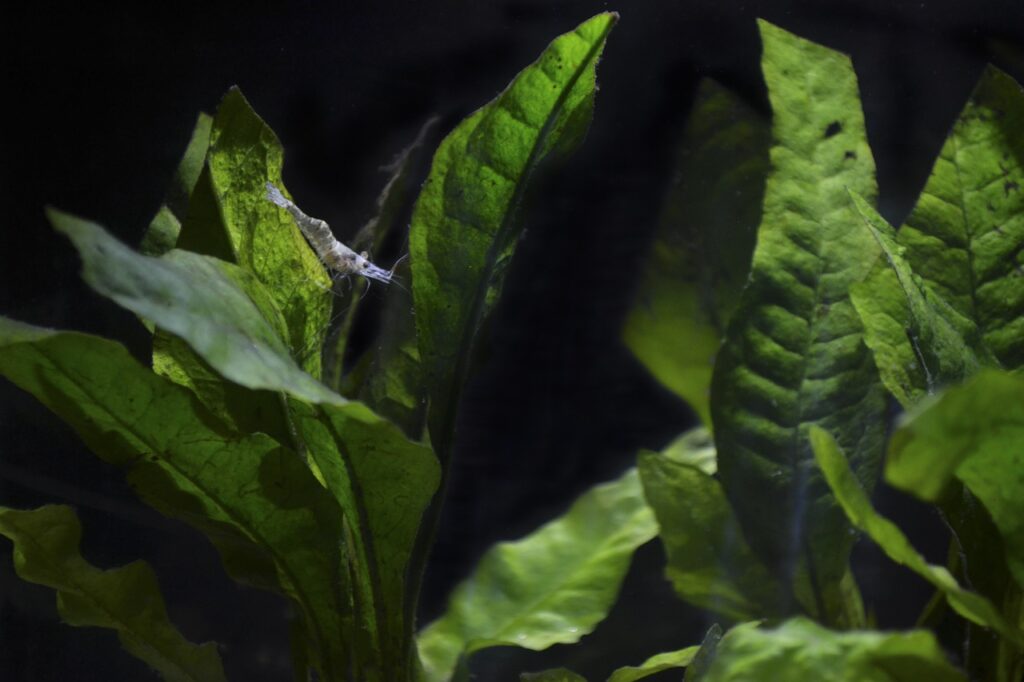Ghost shrimp boast uniquely transparent bodies that make them quite fascinating to watch. An attractive addition to your home decor, they’re affordable, peaceful, and require low maintenance. But can they live in a bowl?
You can keep ghost shrimp in a bowl as long as you regularly change the water. But the ideal tank size is 5 to 10 gallons (19 to 38 L). Note that overfeeding and the lack of regular water changes can affect the water. So, use a filter to prevent ammonia and nitrate from building up to toxic levels.
Most fish keepers breed ghost shrimp as ornamental species or feeders for bigger aquarium fish. In this article, you’ll find additional information on ghost shrimps, including more on their ideal living conditions, plus tips on how to take good care of them. Keep reading.
What Are the Recommended Housing Conditions for Ghost Shrimp?
The recommended housing conditions for ghost shrimp are a 5 gallon (19 liters) tank or aquarium with a fitting lid, ample oxygen, and a filter suited to your tank size. They don’t require heating or lighting and prefer lots of hiding places and decaying plant material to feed on.
Ghost shrimp (also known as glass shrimp) are small-sized shrimp species with adults growing to a mere 1.5 to 3 inches (3.81 to 7.62 cm). Given their tiny size, they can fit comfortably in a fishbowl, though ideally, a larger tank is more appropriate when raising a group of ghost shrimp.
The general rule of thumb is for a tank to hold a gallon (3.8 liters) of water for every batch of 10 ghost shrimp.
They can survive in temperatures up to 26.6°C (80°F), though 18.3 to 23.8°C (65 to 75°F) is their optimal temperature. Also, higher temperatures can increase the risk of bacterial infection and interfere with the molting process when the shrimp grow a new exoskeleton.
Ghost shrimp sport a short lifespan and only live for a year. Still, they’re fast breeders, so you can easily find yourself with a colony of ghost shrimp within a relatively short time.

How To Take Care of Your Ghost Shrimp
Ghost shrimp are hardy creatures that require minimal attention. Still, as household pets, they need general care. Below are useful guidelines on how to ensure the best care for your ghost shrimp:
- Consider keeping young ghost shrimp. They can adapt to their new environment faster than adults.
- Feed the shrimp appropriately. Buy pellets or give them bits of boiled veggies. They’re not picky eaters; ghost shrimp feed on decaying moss, algae, waste, or other tank matter.
- Get the right filter. Ghost shrimp do cleaning themselves. But a filter helps keep their living space cleaner, prevents ammonia burns, and ensures they have enough oxygen. And since they can’t handle strong water currents, get a sponge filter, a biological and mechanical filter that creates a decent flow. Also, it won’t suck up your shrimp.
- Go for a tight-fitting lid with no gaps. A secure cover will prevent your ghost shrimps from jumping out of their home.
- Line the aquarium with 1–2 inches (2.5–5.1 cm) of substrate materials. Place sand, gravel, or plant aquarium substrate in the tank but ensure to rinse off any chemicals, dirt, or other impurities first. You can buy aquarium gravel at your local pet store.
- Provide hiding spots. Ghost shrimp don’t need much light and prefer shady spaces and hiding holes. Therefore, have lots of live plants, rocks, caves, and driftwood in the aquarium.
- Ensure the shrimp have adequate oxygen. Ghost shrimp need high levels of oxygen for breeding and molting. To keep the water well-oxygenated, use an air pump or add live plants.
- Cycle your aquarium fully before placing the ghost shrimp. While ghost shrimp quickly adapt to challenging conditions, they can’t thrive in a tank full of waste. As their waste breaks down, it produces ammonia while bacteria turn this into toxic nitrite. Unfortunately, high concentrations of these compounds can prove fatal to your shrimp.
- Add less aggressive fish to the tank. Gentle and harmless fish like Tetras, Cory catfish, and Cherry barbs will make ideal companions for your ghost shrimp. Alternatively, you can host your ghost shrimp with other shrimp or water snails.
- Add aquatic plants to the tank. Live plants are essential. They help keep the water clean and the tank environment healthy by lowering nitrate levels and supporting the growth of beneficial bacteria. Consider plants like the hornwort, java ferns, and java moss.
Conclusion
If you’re looking to keep ghost shrimps as pets, you need to have a proper freshwater tank environment that simulates their natural habitat. It essentially means avoiding filthy or cramped living conditions.
Luckily, even the inexperienced can care for these dwarf shrimp species since these creatures aren’t fussy and can survive in most situations.
Sources
- Ghost Shrimp: Wikipedia
- Modestfish: Ghost Shrimp Care: Expert Guide for Beginners
- Modestfish: The Nitrogen Cycle: Simple Step and Step Guide for Beginners
- Wikihow: 3 Ways to Take Care of Ghost Shrimp
- Aquarium Tidings: What Fish Can You Keep in a Fishbowl?
- Kidadl: Ghost Shrimp Facts You’ll Never Forget
- Reddit: Do Shrimp Need a Heater?
- Myfishtank: Info on Ghost Shrimp?
- Betta Care Fish Guide: Do Ghost Shrimp Need A Filter? (And Which Is Best)
Recent Posts
How Do Freshwater Shrimps Live? Freshwater shrimp are fascinating creatures that play a crucial role in aquatic ecosystems. They help maintain water quality by consuming algae and decomposing...
How Many Freshwater Shrimp Per Gallon? 4 Key Factors Freshwater shrimp are popular additions to aquariums, but many hobbyists wonder: how many shrimp can comfortably live in a gallon of water? The...

